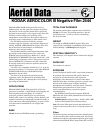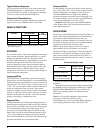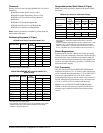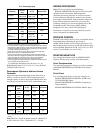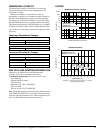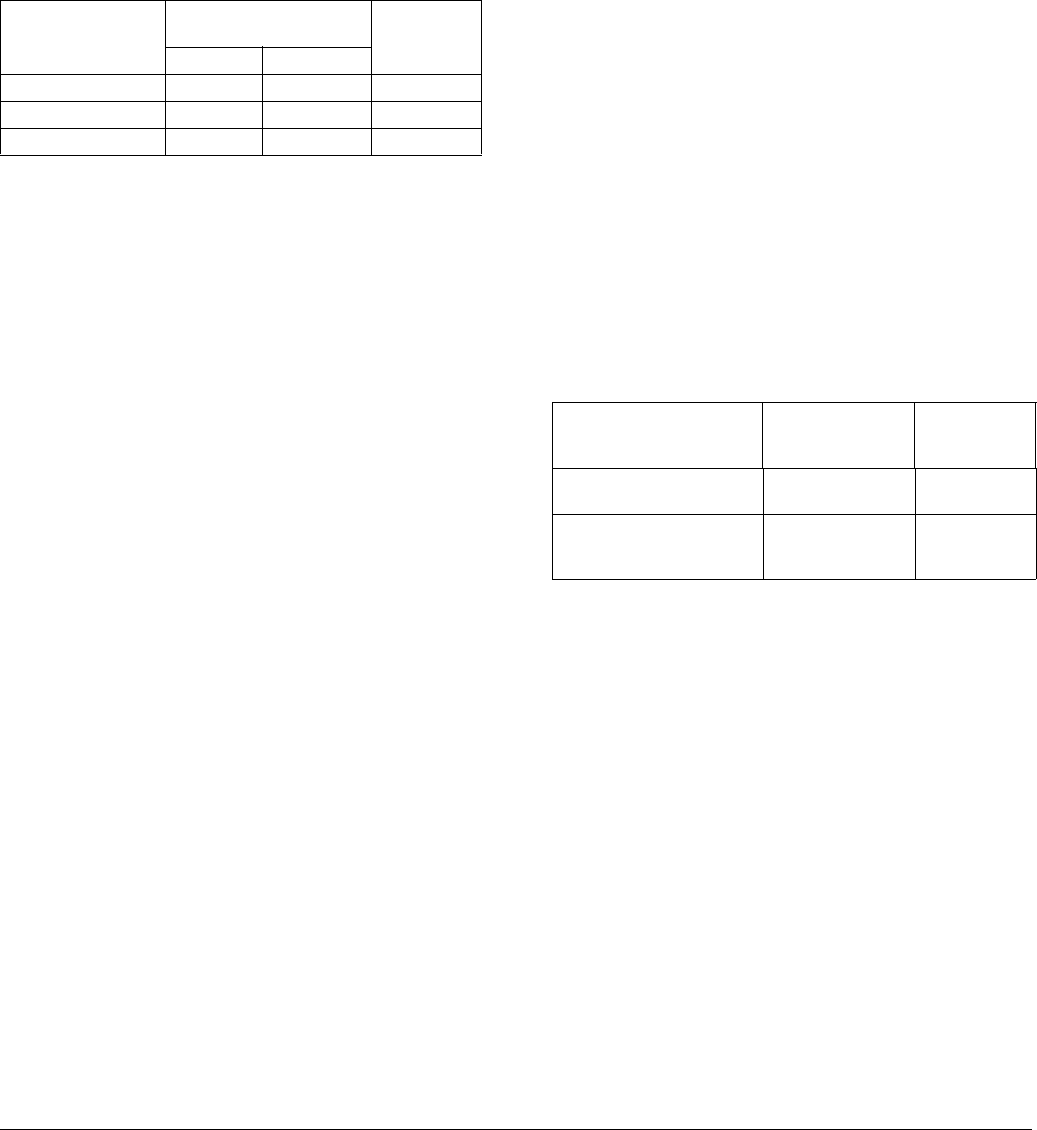
2 KODAK AEROCOLOR III Negative Film 2444 • AS-116
Typical Camera Exposure
A typical exposure for this film, in an aerial camera with a
2X antivignetting filter, is approximately 1⁄750 second at
f⁄5.6. This exposure is based on a solar altitude of 40 degrees,
a clear day, and an aircraft altitude of 5000 feet.
Reciprocity Characteristics
No filter correction or exposure adjustment is required for
exposure times from 1⁄10,000 second to 1⁄10 second.
IMAGE STRUCTURE
*
Granularity values read at a net green diffuse density of 1.0 with a
48-micrometre aperture.
STORAGE
For consistent results, all aerial films should be stored under
fairly constant conditions. Kodak aerial films are “usually”
packaged in equilibrium with 40 to 50 percent relative
humidity. High temperatures or high humidity may produce
undesirable changes in the film. Color films are more
seriously affected by adverse storage conditions than are
black-and-white films. These adverse conditions affect the
three emulsion layers to different degrees, thus causing
changes in the color balance, as well as possible changes in
overall film speed and contrast.
Unexposed Film
While this film has exceptionally good rawstock keeping
characteristics at room temperature, it is recommended that
film that will not be exposed within two weeks be stored in a
refrigerator at 55°F (13°C) or lower, or freezer at 0 to -10°F
(-18 to -23°C), in the original sealed container. If the film is
stored in a refrigerator, remove it about 2 hours before
opening; if stored in a freezer, remove it about 8 hours before
opening. A sufficient warm-up time is necessary to prevent
moisture condensation on cold film—otherwise, moisture
spotting, ferrotyping, or sticking may occur.
Exposed Film
Although this film has excellent latent-keeping properties, it
remains prudent to keep exposed film cool and dry whenever
practical. Process the film as soon as possible after exposure
to avoid undesirable changes in the latent image. If it is
necessary to hold exposed but unprocessed film for more
than a week, it should be resealed and refrigerated at 40°F
(4°C) or lower. Before unsealing and processing exposed
film that has been held in cold storage, follow the warm-up
procedures described above for unexposed film.
Process
Resolving Power
(line pairs/mm)
rms
Granularity
*
TOC 1.6:1 TOC 1000:1
AN-6, 3:00 dev time 80 100 16
C-41, 4:15 dev time 80 125 15
C-41, 3:15 dev time 80 125 10
Processed Film
For best keeping, store processed film in a dark, dust-free
area at 50 to 70°F (10 to 21°C) and 30 to 50 percent relative
humidity. Preferably, store negatives on the spool or in
individual KODAK Sleeves. High relative humidity
promotes the growth of mold and causes ferrotyping. Very
low relative humidity causes excessive curl and brittleness.
Avoid storage temperatures over 80°F (27°C).
Caution! Do not freeze processed AEROCOLOR III
Color Negative Film 2444. Freezing processed film can
cause coupler alterations.
PROCESSING
The primary recommendation for processing 2444 Film is in
Process AN-6 using mechanized processors. Mechanized
processing in roller-transport processors offers the
advantages of uniform treatment of all portions of the roll,
freedom from banding, and absence of significant density
variations from ends of the roll to the center.
Note: Contrast may be easily tailored over a range of
approximately 0.65 to 0.95 gamma to suit various
acquisition and personal preferences. The following tables
for Process AN-6 pertain to the highest contrast option; a
table at the end of this section lists both AN-6 and C-41
developer time/temperature options to achieve a variety of
desired contrasts.
Process AN-6 Cycle Times
In each case, the film is fed emulsion side down into the
processor.
This publication provides general information regarding
the KODAK Aerial Color Processor, Model 1611, and the
KODAK EKTACHROME RT Processor, Model 1811.
Refer to the operating manuals for additional set-up
information.
Note: For a list of firms equipped to offer machine
processing of 2444 Film, send an e-mail to
aerial@kodak.com or write to Eastman Kodak Company,
Aerial Imaging, Rochester, New York 14653-7128.
Processor
Transport Speed
(feet per minute)
Dry-to-Dry
Processing
Time
KODAK Aerial Color
Processor, Model 1611
4.2 11.8 minutes
KODAK EKTACHROME
RT Processor, Model
1811 (with Quick-Change)
4.2 11.6 minutes



